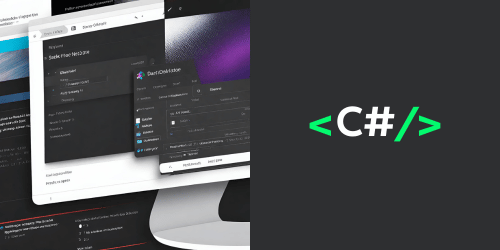Dependency Injection (DI) is a design pattern and an integral part of modern software development, particularly in .NET applications. It helps in managing dependencies between objects, making your code more modular, flexible, and testable. This blog post delves into the concept of Dependency Injection, its benefits, and how to implement it in a .NET application, complete with a "Hello World" example to get you started.
Understanding Dependency Injection
At its core, Dependency Injection is about removing the internal creation of dependencies within a class and instead providing those dependencies from the outside. This pattern is a form of Inversion of Control (IoC), where the control over the dependencies is inverted from the class to an external injector or container.
The Benefits of Using Dependency Injection
- Loose Coupling: DI reduces the coupling between classes, making your codebase more modular and flexible.
- Ease of Testing: With DI, you can easily replace real dependencies with mocks or stubs, facilitating unit testing.
- Improved Code Maintenance: Loose coupling and enhanced testability lead to a codebase that's easier to maintain and extend.
- Simplified Configuration: Changing the implementation of a dependency requires modifications only in the composition root of your application, not throughout your code.
Dependency Injection in .NET
.NET Core and .NET 5/6 provide built-in support for Dependency Injection through the Microsoft.Extensions.DependencyInjection namespace. This support includes a lightweight DI container that is part of the .NET Core framework, making it straightforward to implement DI in your applications.
Setting Up a Simple .NET Console Application
Let's create a simple "Hello World" application that uses Dependency Injection to display a greeting.
Step 1: Create a New .NET Console Application
If you're using the .NET CLI, start by creating a new project:
dotnet new console -n DiHelloWorld
cd DiHelloWorld
Step 2: Add the Dependency Injection Package
To use the DI container, add the Microsoft.Extensions.DependencyInjection package to your project:
dotnet add package Microsoft.Extensions.DependencyInjection
Step 3: Implementing Dependency Injection
Open the Program.cs file and replace its content with the following code:
using System;
using Microsoft.Extensions.DependencyInjection;
namespace DiHelloWorld
{
public interface IGreetingService
{
void Greet(string name);
}
public class GreetingService : IGreetingService
{
public void Greet(string name)
{
Console.WriteLine($"Hello, {name}!");
}
}
class Program
{
static void Main(string[] args)
{
// Set up DI container
var serviceProvider = new ServiceCollection()
.AddSingleton<IGreetingService, GreetingService>()
.BuildServiceProvider();
// Resolve the dependency
var greetingService = serviceProvider.GetService<IGreetingService>();
greetingService?.Greet("World");
}
}
}
In this example, IGreetingService is an interface that defines a contract for a greeting service. GreetingService is a concrete implementation of IGreetingService. In the Main method, we set up a DI container, register GreetingService as the implementation of IGreetingService, and then resolve and use IGreetingService to greet the world.
Step 4: Run Your Application
Use the .NET CLI to run your application:
dotnet run
You should see the output "Hello, World!" in your console, demonstrating how the GreetingService dependency was injected into your application.
Conclusion
Dependency Injection is a powerful pattern for managing your application's dependencies, making your .NET applications more modular, testable, and maintainable. By leveraging the built-in DI support in .NET, you can easily implement this pattern in your projects. The "Hello World" example provided in this post is a basic demonstration of DI in action. As you explore further, you'll find that DI is invaluable for building complex applications, especially when working with frameworks like ASP.NET Core, where DI is a fundamental part of the ecosystem.
Embracing Dependency Injection in your .NET projects not only improves your code quality but also aligns your development practices with industry standards for modern application architecture.

